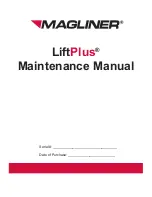
10
9
S A F E T Y I N S T R U C T I O N S
(continued)
When maneuvering close to buildings or passing through narrow areas, be sure to allow sufficient clearance
for the power unit, loader, and load. Drive slowly.
Operate loader from operator’s seat only. Remain at controls until operating cycle is complete.
Use extreme care when working on inclines and hillsides.
Do not operate close to ditches, creeks or holes. Slow down when operating over rough ground.
Allow for additional length of loader and load on power unit while turning.
Keep load centered on attachment and loader. Unbalanced loads increase possibility of tipping or roll-over.
Never allow anyone to walk or work under a raised loader.
Be sure that people, livestock, or pets are not standing near the machine while operating.
Do not use loader for a work platform.
Do not lift or carry anyone on loader or in bucket or on attachment.
ALWAYS lower loader to the ground or block securely before performing any maintenance work.
Always keep power unit on solid footing when operating loader.
Observe Safety Recommendations in loader instruction manual.
Inspect the entire machine periodically as indicated in the Maintenance Section of this manual. Look for loose
fasteners, worn or broken parts, pinched hydraulic hoses, and leaky or loose fittings. Make sure all pins have
cotter pins and washers. Serious injury may occur from not maintaining this machine in good working order.
OPERATIONAL SAFETY (continued)
S A F E T Y I N S T R U C T I O N S
(continued)
Comply with state and local laws governing highway safety and movement of farm machinery on public roads.
The use of flashing amber lights is acceptable in most localities. However, some localities prohibit their use.
Local laws should be checked for all highway lighting and marking requirements.
When driving the tractor and equipment on the road or highway under 20 mph (32 kph) at night or during the
day, use flashing amber warning lights and a slow moving vehicle (SMV) identification emblem.
Always be sure the implement is in the proper raised position for transport.
Reduce speed when transporting mounted implements to avoid bouncing and momentary loss of steering
control.
Plan your route to avoid heavy traffic.
Always install transport locks, pins or brackets before transporting.
Do not drink and drive!
Watch for traffic when operating near or crossing roadways.
Turn curves or go up or down hills only at a low speed and at a gradual steering angle. Make certain that at
least 20% of the tractor’s weight is on the front wheels to maintain safe steerage. Slow down on rough or
uneven surfaces, and loose gravel.
Use extreme care and maintain minimum ground speed when transporting on hillside, over rough ground and
when operating close to ditches or fences. Be careful when turning sharp corners.
Never allow riders on either power unit or implement. Falling off can kill.
Be a safe and courteous driver. Always yield to oncoming traffic in all situations, including narrow bridges, inter-
sections, etc.
Do not exceed 20 mph (32 kph). Reduce speed on rough roads and surfaces.
Always disengage PTO before driving the tractor to transport the implement from one place to another.
TRANSPORT SAFETY


























